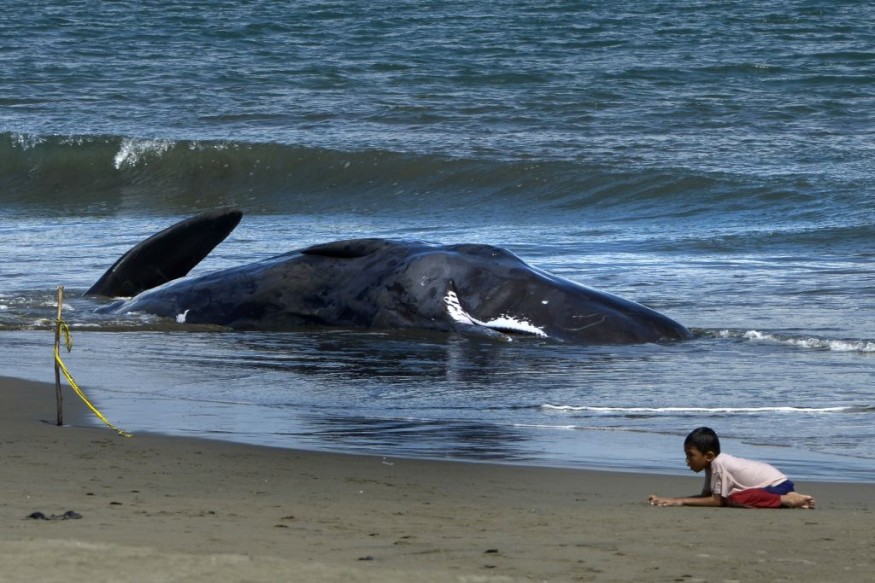Two Filipino fishermen spotted a 60-foot (18-meter) dead sperm whale on the beach of an island in Davao Region, Philippines on May 21, adding to the string of whale deaths this year that has experts concerned.
The Philippines' Department of Environment and Natural Resources (DENR) said that the carcass has multiple wounds and most likely died due to illness before reaching the shore. It is the second dead whale that was washed on the island this year.

An Investigation is Underway for the Dead Sperm Whale
Marine biologists and D'Bone Collector museum owner Darrell Blatchley are investigating the death of the massive whale last week to pinpoint the real cause of its death.
Blatchley messaged Yahoo! News Australia about the whale, describing his efforts of performing a necropsy. He said that since he was unable to move the massive whale due to its weight, he was forced to work on the animal on the beach during low tide and mostly at night.
The man who found 40kg of plastic inside a whale is on a new mission. https://t.co/aumeqcxeRA
— Michael Dahlstrom (@mb_dahlstrom) May 25, 2022
Despite the patchy internet and phone reception in the remote area, Blatchley was still determined to continue the necropsy. He once made worldwide headlines in 2019 after cutting open a dead whale that had 88 pounds (40 kilograms) of plastics in its stomach, describing it as utterly disgusting.
As of now, Blatchley has yet to determine whether plastics also play a part in the cause of death of the sperm whale or if it died due to illness. But the photos he sent to the news outlet show that its teeth were worn down and its huge size has dwarfed him and his team as they work in knee-deep water.
Sperm Whales Classified As Vulnerable Species
The recent dead sperm whale sighting is the second time this year in the Philippines, CNN reported. It came just a day after a juvenile female washed ashore in Tel Aviv and a few weeks later when an adult male and newborn calf were found dead in the Florida Keys.
The first case this year of a washed sperm whale in the Philippines measured about 42 feet (13 meters) and it was found dead in Mindanao, the second largest island in the country. It baffled marine biologists who were unable to determine its cause of death despite collecting tissue samples and dissecting its stomach.
In 2019, the Davao region has recorded five cases of dead sperm whales that were washed ashore. Some have ingested marine trash and toxic microplastics. A necropsy on the whales revealed pieces of nylon rope and single-use plastic cups, which are commonly used by local food vendors, stuck in their mouths and intestines.
The IUCN Red List of Threatened Species has listed sperm whales as vulnerable species and at high risk of extinction in the wild. In the US, these large marine mammals are protected under the Endangered Species Act.
Why Dead Whales Explode
The people who saw the dead whale sperm were discouraged by experts from touching it or getting near it as it might explode. Disposing dead whales is not an easy task and letting nature take its course may not be always an ideal option. National Geographic explains that noxious gases build up as the viscera and stomach contents of the animal decompose.
Although much of a whale's body is made of blubber, the massive throat pouch will inflate when it can no longer sustain the pressure building in its stomach due to the gases. As a result, the whale could explode.
RELATED ARTICLE: Massive 30-Foot Sperm Whale Washed Ashore in Israel Beach Found Dead; The Second Case This Year
Check out more news and information on Whales in Science Times.
© 2025 ScienceTimes.com All rights reserved. Do not reproduce without permission. The window to the world of Science Times.











